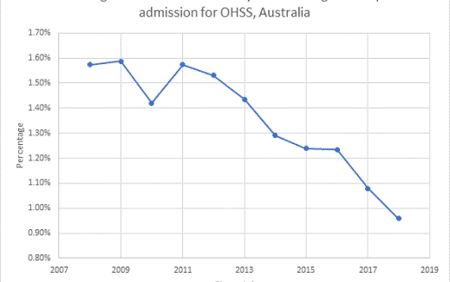Ovarian hyperstimulation syndrome
There has been some media coverage overnight about Ovarian hyperstimulation (OHSS) a long-standing and well-recognised complication of IVF.
During fertility medical consultation OHSS is explained by fertility specialists and all of our information booklets explain this condition in detail. All of our consent forms include a specific reference to the risk of this complication, which is normally one in two hundred cases. However, most cases of ovarian hyperstimulation involve relatively mild symptoms of abdominal pain and bloating which settle by themselves and the severe complications highlighted in the media reports are actually very rare indeed. Some women experiencing abdominal pain related to the egg collection procedure may present to hospital emergency departments with symptoms that may initially seem to be OHSS however can be treated rapidly with pain relief.
The media coverage at this point is surprising as with the modern medications that are now available, the actual risk of this complication has been declining in Australia for some time as can be seen in the attached figure.
Figure: Percentage of ART cycles resulting in an admission to a public or private Australian hospital due to hyperstimulation of the ovaries.

Sources: 1. Number of separations with a principal diagnosis (International Classification of Diseases-10-Australian Modification 9th edition) of hyperstimulation of ovaries, 2008-2018, Australia (Source: Australian Institute Health & Welfare AIHW Principal Diagnosis Data Cubes). 2. Number of initiated fresh ART cycles performed in Australian fertility clinics 2008-2017 (Source: Australian and New Zealand Assisted Reproductive Technology Database (ANZARD), National Perinatal Epidemiology and Statistics Unit (NPESU), UNSW Sydney). Note, the 2016 ART cycle count was used for 2017 also.
At IVFAustralia, we have been conscious of this condition for a long time and have adopted practices to reduce the incidence of this side effect, including the use of lower dose stimulation approaches and the use of the very gentle medications to trigger ovulation. As a result, hospital admissions with true ovarian hyperstimulation are nowadays a relatively uncommon event, contrary to the suggestions that the cases are deliberately under-reported, we do carefully record and report all the cases that are known to us.
